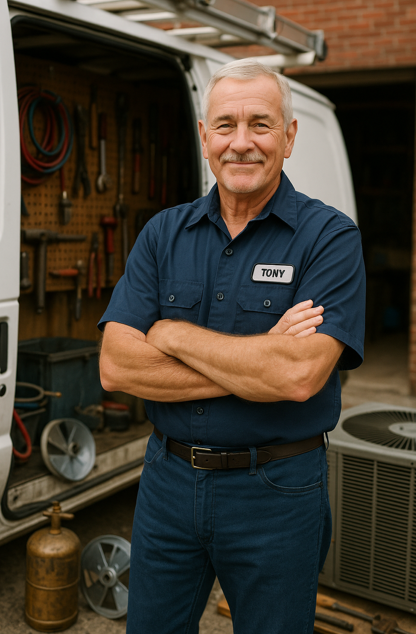Let’s Get Real About HVAC Costs
Hey, Tony here. Everyone talks about how energy efficient and climate-friendly R32 systems are—and they're right. But let’s not forget the brass tacks: What do these systems actually cost?
If you’re buying blind, you could overpay upfront or miss out on long-term savings. This guide gives you the full breakdown, so you can budget smart and get the most bang for your buck.
I’ll walk you through:
-
Equipment pricing
-
Installation costs
-
Energy efficiency returns
-
Maintenance expenses
-
Rebates and incentives
And yeah, we’ll also talk about why systems from The Furnace Outlet are a solid investment in 2025 and beyond.
Equipment Costs: What You’re Paying For
The Condenser
This is the outside unit, the powerhouse. For R32 systems, condensers range from $900 to $2,500, depending on tonnage and SEER2 ratings. A high-SEER2, inverter-driven model will cost more upfront but can slash your monthly bills.
The Air Handler
This is your indoor unit. You’ll pay between $600 and $1,400, depending on whether it’s a single-speed, multi-speed, or variable-speed handler.
Bundled Systems
At The Furnace Outlet, you can get matched systems from $1,500 to $4,000. These are factory-paired for best performance and efficiency.
Pro Tip: Buy matched systems to maintain manufacturer warranties and hit optimal SEER2 ratings.
Installation Costs: What to Expect
HVAC install pricing varies based on location, home size, and ductwork needs. National averages for full system installation range from $3,500 to $7,000.
-
Straight swap-out: $1,500 to $3,000
-
New install (no existing system): $5,000 to $10,000
-
Ductwork upgrades: $2,000 to $5,000
Check with Energy.gov's HVAC cost estimates for baseline figures. And always get 2–3 quotes from licensed, R32-certified contractors.
Energy Efficiency: What You Save
Monthly Bills
R32 systems typically use 10% to 30% less energy than R410A models. That’s no small change.
According to the U.S. Department of Energy, every SEER point you gain can save up to 10% annually on cooling costs.
Say your current system has a SEER of 10, and you upgrade to a 16 SEER2 R32 unit. Your cooling costs could drop from $1,200/year to around $800/year. That’s $400 in your pocket every year.
Climate Impact
R32’s GWP is 675, compared to 2,088 for R410A. That’s why the EPA supports refrigerant transition rules pushing for R32 adoption.
Maintenance Costs
Annual Checkups
Budget around $100 to $300/year for a licensed tech to inspect refrigerant levels, clean coils, and test operation.
Filter Replacement
DIY these every 1–3 months for $10 to $30 a pop. A clogged filter kills efficiency.
Repairs
Same as with any HVAC:
-
Capacitors: $150 to $300
-
Refrigerant top-off (rare with R32): $200 to $600
-
Fan motor: $400 to $800
But here’s the kicker—R32 systems are often simpler to service than older blends. And many parts are interchangeable with R410A systems.
Long-Term ROI: How Soon Does It Pay Off?
A high-SEER2 R32 system might cost $1,000 more upfront. But if it saves you $300–500/year on utilities, you break even in 2–3 years.
And then? Pure savings for the next 10–15 years. Plus, your home’s resale value goes up.
Zillow even reports that homes with energy-efficient HVAC systems sell faster and at a premium.
Rebates, Credits & Tax Perks
You’d be shocked how many people leave money on the table here.
Federal Tax Credits
Thanks to the Inflation Reduction Act, you can get up to $2,000 in nonrefundable tax credits on qualifying R32 systems.
Utility Rebates
Visit the Energy Star Rebate Finder to plug in your zip code and find deals. Many utilities offer $250 to $750 rebates for ENERGY STAR-certified equipment.
State Programs
The DSIRE database is your one-stop shop for all local and state-level energy rebates.
Don’t forget to check for:
-
Smart thermostat bonuses
-
Time-of-use rate discounts
-
Low-income energy grants
The Hidden Costs of NOT Upgrading
Still running an old R410A or R22 system?
-
Higher Energy Bills: Old systems are often <10 SEER.
-
Repairs: R22 is banned; replacement parts are rare and $$$.
-
Compliance: Local codes may soon require low-GWP refrigerants.
You could end up paying more just to keep an outdated system limping along. It’s like pouring gas into a rust bucket.
Final Word from Tony
Here’s what it boils down to: R32 systems cost a little more upfront, but they’re cheaper to run, easier to service, and a whole lot better for the planet.
So don’t just look at the price tag. Run the numbers over the system’s lifetime.
And when you're ready to invest smart, check out our curated R32 systems at The Furnace Outlet.
You get:
-
Matched units
-
Expert support
-
Solid warranties
Trust me. Your wallet and your thermostat will thank you.
🛠️ When it comes to comfort, I’ve got your back. Keep it cool
— Tony 🛠️







